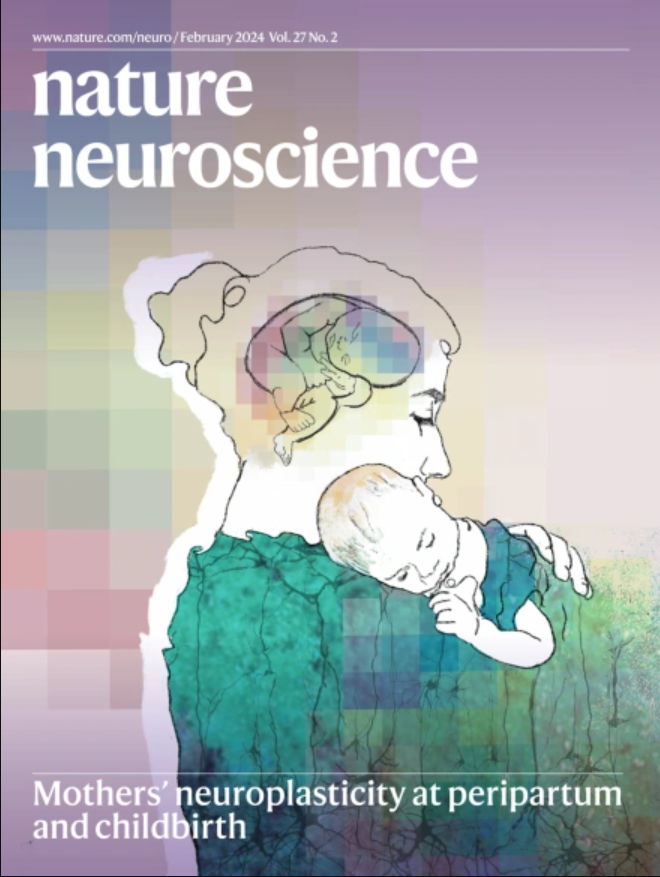小鼠脾后皮层循环神经动力学的空间推理
IF 20
1区 医学
Q1 NEUROSCIENCES
引用次数: 0
摘要
从视觉到语言,感官刺激会根据先前的经验改变其意义。循环神经动力学可以根据外部提示上下文解释刺激,但尚不清楚它们是否可以计算和使用内部假设来解决歧义。在这里,我们表明小鼠脾后皮层(RSC)可以随着时间的推移形成几个假设,并通过循环动力学进行空间推理。在我们的任务中,小鼠使用通过相互空间关系识别的模糊地标进行导航,这需要对假设进行顺序优化。RSC和人工神经网络中的神经元编码假设、位置和感觉信息的混合物,并受到鲁棒低维动态的约束。RSC将假设编码为活动空间中具有相同感官输入的不同轨迹的位置,从而使其能够正确解释。我们的研究结果表明,内部假设和外部感官数据在循环回路中的相互作用可以为复杂的顺序认知推理提供基础。本文章由计算机程序翻译,如有差异,请以英文原文为准。


Spatial reasoning via recurrent neural dynamics in mouse retrosplenial cortex
From visual perception to language, sensory stimuli change their meaning depending on previous experience. Recurrent neural dynamics can interpret stimuli based on externally cued context, but it is unknown whether they can compute and employ internal hypotheses to resolve ambiguities. Here we show that mouse retrosplenial cortex (RSC) can form several hypotheses over time and perform spatial reasoning through recurrent dynamics. In our task, mice navigated using ambiguous landmarks that are identified through their mutual spatial relationship, requiring sequential refinement of hypotheses. Neurons in RSC and in artificial neural networks encoded mixtures of hypotheses, location and sensory information, and were constrained by robust low-dimensional dynamics. RSC encoded hypotheses as locations in activity space with divergent trajectories for identical sensory inputs, enabling their correct interpretation. Our results indicate that interactions between internal hypotheses and external sensory data in recurrent circuits can provide a substrate for complex sequential cognitive reasoning. Using a spatial reasoning task in mice, the authors show that retrosplenial cortex encodes spatial hypotheses with well-behaved recurrent dynamics, which can combine these hypotheses with incoming information to resolve ambiguities.
求助全文
通过发布文献求助,成功后即可免费获取论文全文。
去求助
来源期刊

Nature neuroscience
医学-神经科学
CiteScore
38.60
自引率
1.20%
发文量
212
审稿时长
1 months
期刊介绍:
Nature Neuroscience, a multidisciplinary journal, publishes papers of the utmost quality and significance across all realms of neuroscience. The editors welcome contributions spanning molecular, cellular, systems, and cognitive neuroscience, along with psychophysics, computational modeling, and nervous system disorders. While no area is off-limits, studies offering fundamental insights into nervous system function receive priority.
The journal offers high visibility to both readers and authors, fostering interdisciplinary communication and accessibility to a broad audience. It maintains high standards of copy editing and production, rigorous peer review, rapid publication, and operates independently from academic societies and other vested interests.
In addition to primary research, Nature Neuroscience features news and views, reviews, editorials, commentaries, perspectives, book reviews, and correspondence, aiming to serve as the voice of the global neuroscience community.
 求助内容:
求助内容: 应助结果提醒方式:
应助结果提醒方式:


